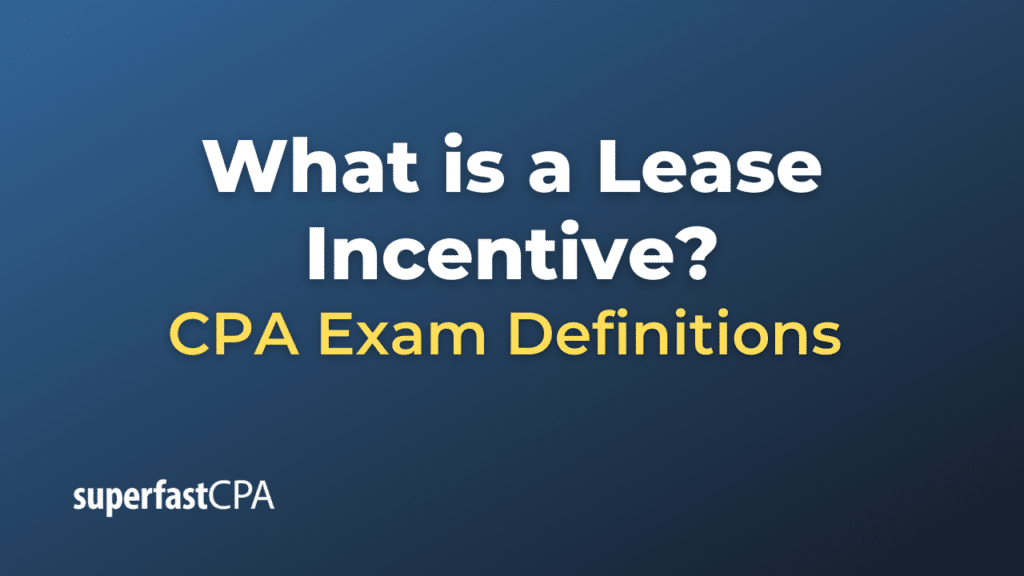Lease Incentive
A lease incentive is an inducement offered by a landlord to entice a tenant to sign a lease. These incentives are often used to attract tenants to commercial or residential property leases, and they can take various forms, such as:
- Reduced Rent: The landlord might offer a lower rental rate for a certain period. For instance, a landlord might offer the first month free or a reduced rent for the first year.
- Rent Abatement: The landlord might offer a period of free rent, typically at the beginning of the lease term.
- Tenant Improvement Allowance: The landlord may provide a specific amount for the tenant to customize or improve the leased property to suit their needs.
- Moving Allowance: A landlord may offer to pay part or all of the tenant’s moving expenses.
- Early Termination Option: The landlord might offer a lease agreement that includes a clause allowing the tenant to terminate the lease early without penalty.
These incentives are typically provided at the landlord’s discretion and can be negotiated as part of the lease agreement.
In accounting, lease incentives are usually factored into the calculation of lease liabilities and right-of-use assets under both U.S. GAAP and IFRS. These incentives reduce the overall lease liability and corresponding right-of-use asset recorded on the lessee’s balance sheet, thereby lowering the total lease cost over the lease term.
This is a simplified explanation, and the specifics can get quite complex, especially when considering the new lease accounting standards (ASC 842 for U.S. GAAP and IFRS 16 for international standards) that require most leases to be recorded on the balance sheet. It’s recommended to consult with an accountant or financial advisor for specific situations.
Example of a Lease Incentive
Let’s consider a commercial lease scenario.
Company ABC is seeking tenants for its newly constructed office building. To attract potential lessees, they offer a lease incentive in the form of a “Tenant Improvement Allowance” of $50,000. This means that ABC is willing to contribute up to $50,000 towards any renovations or customizations the tenant might need to make the space suitable for their business operations.
XYZ Corp, a rapidly growing tech startup, is interested in the space but would need to modify it to fit their needs. Given the generous tenant improvement allowance, XYZ Corp agrees to a 5-year lease contract with ABC.
Here’s how this would look in the books of XYZ Corp:
- XYZ Corp agrees to pay an annual rent of $100,000.
- The total rent over the 5-year lease term is $500,000.
- However, ABC has provided a lease incentive in the form of a $50,000 tenant improvement allowance.
- Therefore, XYZ Corp would calculate the present value of the lease payments as $450,000 ($500,000 in total lease payments minus the $50,000 incentive).
XYZ Corp would then record a right-of-use asset and a lease liability of $450,000 at the commencement of the lease. The tenant improvement allowance reduces the overall cost of the lease, which is reflected in the lease liability and right-of-use asset recorded on XYZ Corp’s balance sheet.
This example illustrates how lease incentives can have a direct impact on the financial accounting of lease agreements. As always, for complex transactions, it’s recommended to seek professional accounting advice.













